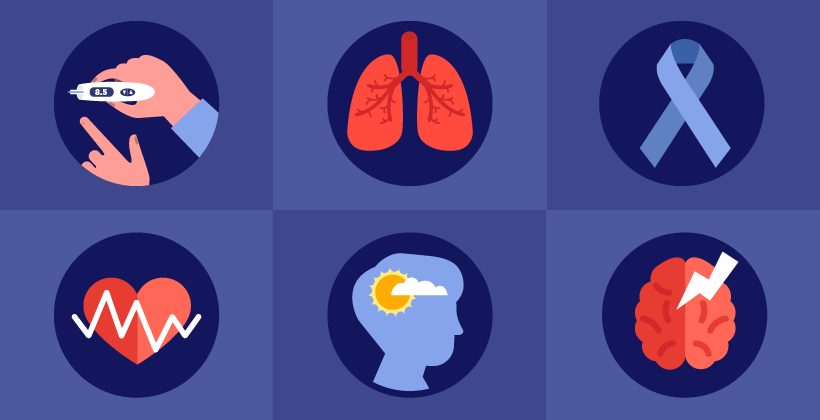A bright future for vitamin D
Last Updated : 14 November 2011Vitamin D has recently been hitting the headlines in Europe, highlighting the need for action to ensure that Europeans have enough vitamin D. But how should this be obtained? Is diet and sunshine enough, or do we need a bit of extra help?
Vitamin D - beyond a vitamin
Vitamin D is a unique nutrient in that it can be derived from food as well as from the action of sunlight on bare skin. It is essential for the optimal use of calcium in the body in that it aids calcium absorption in the gut and deposition in the bones, and it controls calcium levels in the blood. Deficiency results in bone disorders such as rickets in children and osteoporosis in adults. Evidence is now emerging that vitamin D has many additional roles to play.
The term vitamin D actually comprises two compounds, vitamin D2 and vitamin D3, which differ slightly in their chemical structure. Vitamin D2, also referred to as ergocalciferol, is produced by yeast and largely added to foods. Vitamin D3 (cholecalciferol), on the other hand, is the form produced in the skin upon sun exposure and consumed in the diet via animal-based foods. Both forms of vitamin D are used in fortified foods and supplements, yet there is evidence that vitamin D3 may be more potent and more stable than vitamin D2 and thus should be the fortificant of choice.1
Vitamin D from sun exposure
Vitamin D is produced from cholesterol when sunlight hits the skin. More precisely, it is the ultraviolet B (UV-B, 280-315 nm) fraction of sunlight that causes vitamin D formation from its precursor 7-dehydrocholesterol. The World Health Organization (WHO) advises to expose face and arms to sunshine for about 30 minutes a day – while avoiding sunburn – to achieve adequate vitamin D production.2 Any surplus of this fat-soluble vitamin produced during summertime may be stored in fat tissue for later use. It is not possible to get too much vitamin D from sun exposure because of an autoregulatory mechanism that leads to heat-induced breakdown into non-active vitamin D analogues.
Vitamin D stores typically do not last throughout the winter season, and at European latitudes the sunlight is not strong enough during wintertime to produce satisfactory amounts of vitamin D.3 According to WHO, individuals who are housebound or who dress to cover their skin are at particularly high risk of vitamin D deficiency, as are individuals with dark skin since skin pigmentation reduces the UV-B radiation reaching the vitamin D-producing cells.2 Frequent and thorough use of sunscreens, commonly advised to protect against skin cancer, similarly blocks vitamin D synthesis.4,5 Therefore dietary vitamin D fills an important function.
Dietary Vitamin D
WHO recommends daily vitamin D intakes of 5 µg (≥ 200 International Units (IU)) for children and adults up to 50 years (incl. pregnant and lactating women), 10 µg (400 IU) from 51-65 years and 15 µg (600 IU) for people >65 years.2 National recommendations for dietary vitamin D vary across Europe, but tend to be higher.6 In comparison, the United States Institute of Medicine (IOM) currently recommends vitamin D intakes of 15 µg per day for people aged 1-70 years, and 20 µg per day for those older than 70 years.7 These newly published recommendations of the IOM reflect a significant increase to the previous edition: a threefold increase of the recommended vitamin D intakes for children and a 1.5-3-fold increase for adults up to the age of 70 years, appreciating the significant research progress in the field of vitamin D.
The main dietary sources of vitamin D include fish liver, fish liver oils, fatty fish and egg yolks (see Table 1) and fortified foods such as fortified cereals, milk, butter and margarine.8
Table 1 Major food sources of vitamin D9
Food | Vitamin D (µg per 100 g) |
Cod liver oil | 210.0 |
Mackerel, raw | 8.2 |
Salmon, raw | 7.1 |
Salmon, grilled | 5.9 |
Egg yolk | 4.9 |
Safe upper levels of intake set by the Scientific Committee on Food are 25 µg vitamin D per day for infants and children up to 10 years of age, and 50 µg per day for the rest of the population.8 In comparison, the IOM has defined vitamin D daily safe upper intake levels of 25 µg for infants aged 0-6 months, 37.5 µg for infants aged 6-12 months, 62.5 µg for infants aged 1-3 years, 75 µg for children aged 4-8 years and 100 µg for people aged 9 years and older.7
Inadequate Vitamin D
Most Europeans do not reach the dietary recommendations for vitamin D.2,3 For people struggling to reach appropriate vitamin D levels through sun exposure and diet, vitamin D supplements or foods with added vitamin D may be an option. Recent research showed, for example, that fortified orange juice may be an economical way of helping people to get enough vitamin D.10
Vitamin D food fortification programmes, which aim to reach a significant part of the population, have been successfully implemented in a number of countries (such as the fortification of all liquid milk in Canada). This has been shown by analysis of vitamin D status of populations in these countries. Food fortification (mandatory as well as voluntary) needs to be monitored for its impact on total intakes. Mandatory vitamin D food fortification programmes have distinct advantages over voluntary programmes, where there might be wide variation in nutrient fortification even within the same brand and category of foods (e.g. breakfast cereals). For these reasons public health advice to ensure adequacy of vitamin D intake recommends supplements providing well-defined daily doses – especially for risk groups like the elderly and postmenopausal women – next to basic supply available from foods including fortified foods.11
Whatever the approach, it should be borne in mind that total daily intake should not exceed the age-related safe upper level of 25 and 50 µg (1000 and 2000 IU) per day as set by the European Scientific Committee on Food.8 People with higher sun exposure that leads to vitamin D production might need to take care to stay within safe dietary limits. Clinical symptoms of excess vitamin D (hypervitaminosis D) include anorexia, weight loss, weakness, fatigue, disorientation, vomiting and constipation.8
Benefits of vitamin D – old and new
Vitamin D is important in maintaining bone health, but is also needed for muscle function and balance – too little can lead to increased risk of fractures. Besides promoting stronger bones, adequate vitamin D levels reduce the risk of fractures arising from falls by around 20-30%, a significant problem in older adults.12 Other areas where vitamin D may be beneficial are cognitive decline in the elderly, multiple sclerosis, rheumatoid arthritis, diabetes, and certain cancers (breast, colorectal and prostate).13-15 However, the IOM report cautions that more research is needed to confirm these early links.7
Conclusions
For Europeans at risk of having poor vitamin D status, daily short periods of exposure to sunlight help ensure adequacy during late spring, summer, and early autumn. Short summer seasons in combination with indoor-based lifestyles and concerns over skin cancer, however, point to the value of dietary measures to meet individual needs. These may include vitamin D-fortified foods and supplements, especially for groups at particularly high risk of vitamin D inadequacy.
References
- Houghton LA and Vieth R. (2006). The case against ergocalciferol (vitamin D2) as a vitamin supplement. American Journal of Clinical Nutrition 84(4):694-697.
- WHO. (2004). Vitamin and Mineral Requirements in Human Nutrition, 2nd Edition. Geneva, Switzerland.
- Ovesen et al. (2003). Geographical differences in vitamin D status, with particular reference to European countries. Proceedings of the Nutrition Society 62:813-821.
- WHO Fact sheet N° 305. Ultraviolet radiation and human health. December 2009.
- Norval M, Wulf HC. (2009). Does chronic sunscreen use reduce vitamin D production to insufficient levels? British Journal of Dermatology 161(4):732-736.
- Doets EL et al. (2008) Current micronutrient recommendations in Europe: towards understanding their differences and similarities. European Journal of Nutrition 47 Supplement 1:17-40.
- Institute of Medicine. (2010). DRIs for Calcium and Vitamin D.
- Scientific Committee on Food. (2002). Opinion of the Scientific Committee on Food on the Tolerable Upper Intake Level of Vitamin D.
- Food Standards Agency (2002). McCance and Widdowsons’s The Composition of Foods, 6th summary edition. Cambridge: Royal Society of Chemistry.
- Biancuzzo RM et al. (2010). Fortification of orange juice with vitamin D2 or vitamin D3 is as effective as an oral supplement in maintaining vitamin D status in adults. American Journal of Clinical Nutrition 91:1621-1626.
- Flynn MAT et al. (2008). Folic acid food fortification: the Irish experience. Proceedings of the Nutrition Society 67:381-389.
- Bischoff-Ferrari HA et al. (2009). Fall prevention with supplemental and active forms of vitamin D: a meta-analysis of randomised controlled trials. British Medical Journal 339:b3692.
- Buell et al. (2009). Vitamin D Is Associated With Cognitive Function in Elders Receiving Home Health Services. Journal of Gerontology 664:888-895.
- Holick MF. (2004). Sunlight and vitamin D for bone health and prevention of autoimmune diseases, cancers, and cardiovascular disease. American Journal of Clinical Nutrition 80(6 Suppl):1678S-1688S.
- Giovannucci E et al. (2006). Prospective study of predictors of vitamin D status and cancer incidence and mortality in men. Journal of the National Cancer Institute 98(7):451-459.








